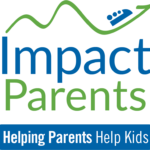ADHD 101: Common Ages for Diagnosis

The start of a new school year is exciting, exhilarating and stressful – full of novelty and exploration. It is also, often, prime time for an ADHD diagnosis for kids at specific ages.
Common Years for ADHD Diagnosis
In general, practitioners see a marked increase in the volume of ADHD diagnoses in the fall – specifically for 1st & 2nd graders, 6th graders, and college freshmen.
It typically starts right after the first parent/teacher conference of the year, when parents often hear (sometimes for the first time) that their child is falling behind, acting out in class or not doing work reflective of their academic & intellectual potential.
It can be heartbreaking – for parents and kids, alike.
Elementary Years
For 1st and 2nd graders its’s pretty straightforward. This may be the first time a child interacts in a structured, highly controlled, academic setting for an extended period of time. Regardless of how you feel about making students sit in a classroom for the majority of a school day, that is the most common education environment for kids, and it becomes quickly apparent who can sit still, and who can’t.
Parents and teachers may have seen signs of ADHD in these kids in Kindergarten or earlier, but they were considered "within the range of normal" childhood behavior when kids were excited or overwhelmed. But by the time a child is in 1st or 2nd grade, things that may have seemed ‘normal’ at home, now appear to be glaringly different when compared to the behavior and performance of their peers.
Excessive activity is not the only symptom of ADHD that becomes more pronounced in early elementary school. In some cases, parents receiving the results of early standardized testing discover that a child who seemed to be following along in class and ‘getting’ the lessons was actually completely checked out. This gap in actual versus expected test scores is often an indicator for kids with predominantly inattentive type ADHD.
If ADHD is suspected, getting diagnosed early is essential. 1st and 2nd grades can be critical years for a child’s developing self-image and self-esteem. Sadly, by the end of 2nd grade, most kids have already identified who the ‘bad’ kids are in their class. Even more concerning, often the ‘bad’ kid knows it.
Article continues below...
Treatment for your Child's ADHD
Download a free tip sheet "Recommended Treatment for ADHD: Medication & Behavior Management" for what's really recommended for your child or teen.
Middle School Years
Sixth graders are often diagnosed when the executive function demands of middle school outstrip a child's ability to stay on top of things. This is another time that ADHD can become painfully apparent. More than likely, this was a child who may have been borderline in previous testing, or who may have had a lot of built in structure and support at home and at school during the elementary school years.
But when 6th grade hits, a student is expected to navigate bigger buildings, busier hallways, locker combinations and different supplies and books for each class. For many complex kids, that’s just too much to handle. Their peers may have learned systems for management along the path in Elementary school, but if they missed critical lessons, they can start off already behind.
Kids with ADHD often have trouble with planning, organizing, impulse control, emotionality, time management and lots of little things that lead to academic independence. A middle school diagnosis often finds both parent and child playing ‘catch up’ as they struggle to find the gaps and work to quickly identify effective treatment options.
Middle school is also when puberty kicks into high gear – just to keep things interesting!
College Years
But what about college freshmen? Can teens really get all the way to college before the find out they have ADHD – in this day and age?
YES! They can!
And often do!
How did these students get missed?
There are lots of potential reasons. Perhaps they went to an extremely structured school where everything was planned and structured for them. Or maybe, at home, they had a family who worked really hard at keeping everyone on a schedule, so they knew what was expected of them, and when – and they thrived on that routine. Or maybe they were athletes in high school and exercised regularly for the better part of their undergraduate education. While exercise can be a powerful tool in managing ADHD, it can very easy for a college freshman to stop working out, not stay on a healthy lifestyle schedule, skip class, and spiral into anxiety and depression.
Similar to the 6th grade scenario, college freshmen are typically dealing with an exponential amount of choices and freedoms. They’re not just in a different or bigger building, they’re often in an entirely different city! Factor in an expanded social life, complete reliance on self, and hours of unstructured down time – and it’s easy to see why many hit the proverbial brick wall.
This transition is generally challenging for most young adults; but for those with undiagnosed ADHD, it can be terrifying.
It's Never too Late to Get an ADHD Diagnosis
The good news is that once a thorough evaluation is completed, and an appropriate diagnosis given, with treatment and support, every kid can go on to be successful at their next step in life.
But the key here is treatment: support for management of ADHD. Whether your child is diagnosed as a young child, a young adult, or somewhere in between, it’s critically important that you celebrate this newfound information and forge ahead positively.
While ADHD can be diagnosed at any age, beating yourself up over what may have been missed or what could have gone differently will not help your child learn the strategies and supports needed to succeed. And truly – those are the keys to long term success for anyone with ADHD.

